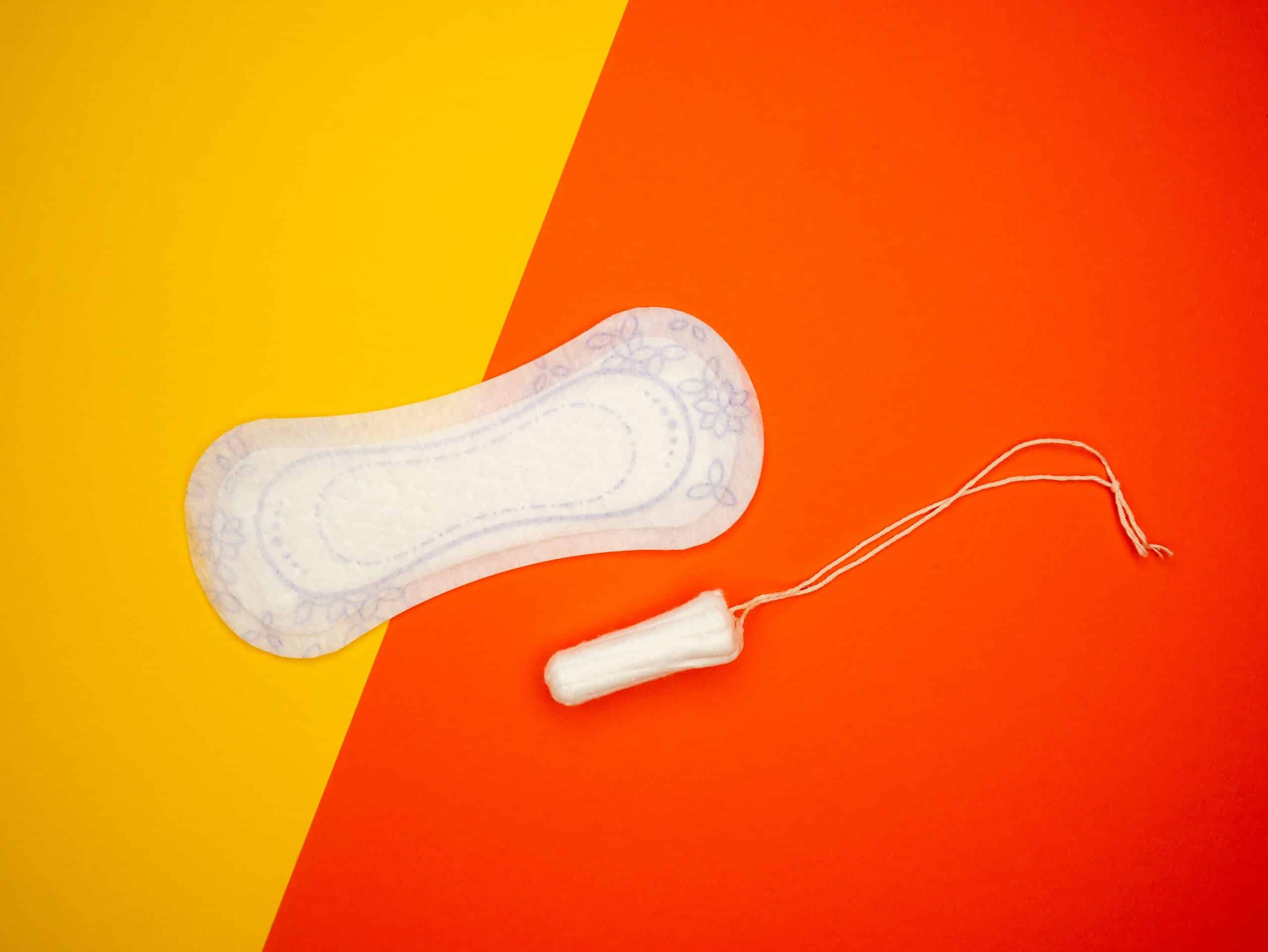Menstrual changes are one of the earliest and most disruptive signs of endometriosis. Many women experience heavier bleeding, painful cramps, irregular cycles, or unexpected spotting—symptoms that can deeply affect everyday life. These changes often reflect deeper hormonal imbalances and inflammation caused by tissue growing outside the uterus. Understanding how endometriosis affects menstrual flow can lead to earlier recognition and better management. With proper diagnosis and personalized treatment, these symptoms can be brought under control. This guide explores the causes, signs, treatments, and supportive strategies for managing endometriosis-related menstrual flow changes.
Key Takeaways
- Endometriosis frequently causes heavy bleeding, painful menstruation, irregular cycles, and spotting due to hormonal imbalances and ectopic endometrial tissue.
- Diagnosis relies on a detailed clinical history, laparoscopy, and imaging techniques.
- Treatment options include hormonal therapy, pain management, surgical interventions, and lifestyle modifications.
- Early symptom recognition and the use of symptom trackers or counseling are crucial for effective management.
- Menstrual flow changes may be early signals of underlying fertility issues.
What Are the Common Menstrual Flow Changes Caused by Endometriosis?

Endometriosis often causes noticeable changes in menstrual flow that can interfere with daily routines. These include heavy bleeding, severe cramps, irregular cycles, and spotting between periods. These symptoms are tied to the hormonal and inflammatory responses triggered by misplaced endometrial tissue. Recognizing and tracking these changes is a crucial first step in receiving timely diagnosis and effective treatment. Understanding the menstrual patterns associated with endometriosis helps guide more personalized care.
How Does Endometriosis Cause Heavy Menstrual Bleeding?
Heavy menstrual bleeding occurs when tissue growing outside the uterus reacts to hormonal cycles. This leads to extra bleeding, as the ectopic tissue inflames surrounding areas and increases blood loss. The inflammatory response amplifies the flow, making it more difficult to manage with typical sanitary products. Women may need to change products more often or double up for protection. Over time, this blood loss can lead to fatigue or iron deficiency. Managing the bleeding is key to improving quality of life. Tracking cycle length and flow volume helps monitor changes. Proper intervention can reduce the severity and impact.
What Are the Signs of Painful Periods (Dysmenorrhea) in Endometriosis?
Painful periods are common in endometriosis and often go beyond typical cramping. Pain can begin days before bleeding starts and persist through the cycle. The sensation may feel sharp, stabbing, or deep and may be accompanied by lower back pain or abdominal bloating. Over-the-counter pain relief often provides little benefit. This pain may interfere with sleep, mobility, and focus. It can also affect appetite and mood. Documenting when the pain occurs during the cycle is helpful. Persistent or worsening pain should prompt further medical evaluation.
How Does Endometriosis Lead to Irregular Menstrual Cycles?
Endometriosis can disrupt hormonal balance, leading to unpredictable periods. Cycles may vary in length or intensity and may shift from month to month. Some may experience shorter intervals between periods, while others may miss cycles altogether. These irregularities may point to hormone imbalances that impact ovulation. Inconsistent bleeding patterns can also affect fertility planning. The severity and timing of symptoms may vary over time. Keeping a detailed cycle journal is useful for tracking changes. Early recognition helps support timely treatment planning.
What Does Spotting Between Periods Indicate in Endometriosis?
Spotting between periods is often one of the first signs of abnormal endometrial activity. This light bleeding typically doesn’t follow a regular pattern and may be overlooked at first. It can occur in the days before or after a menstrual cycle or randomly throughout the month. The spotting may be accompanied by mild cramping or pelvic discomfort. While it may seem harmless, it can signal hormonal imbalance or tissue shedding outside the uterus. When persistent, it warrants medical attention. Spotting should be tracked for frequency and timing. Early intervention may prevent worsening symptoms.
How Is Endometriosis Diagnosed When Menstrual Flow Changes Occur?

When menstrual flow changes become frequent or severe, evaluation for endometriosis is often necessary. Diagnosis involves a combination of clinical history, physical exam, imaging, and sometimes surgical procedures. Each step is important for confirming the presence and extent of abnormal tissue growth. Early identification can help prevent progression and reduce long-term complications. Personalized treatment decisions rely on a clear and accurate diagnosis.
What Diagnostic Procedures Are Used for Endometriosis?
Diagnosis typically begins with a discussion of symptoms and menstrual history. A pelvic exam may be performed to check for tenderness or abnormalities. Transvaginal ultrasound is often used to look for signs such as ovarian cysts or thickened tissue. MRI can offer a more detailed view when needed, especially for deep lesions. While blood tests may support evaluation, they are not diagnostic on their own. Imaging results are reviewed alongside symptoms to determine next steps. A thorough evaluation may also include reviewing cycle patterns. These tools work together to build a complete clinical picture.
How Does Laparoscopy Confirm Endometriosis?
Laparoscopy is a minimally invasive procedure that allows direct observation of pelvic structures. A small camera is inserted through a tiny incision in the abdomen to check for lesions and adhesions. Suspicious tissue may be biopsied during the procedure for analysis. Laparoscopy also allows for treatment to begin immediately if needed, such as removing visible lesions. It is often used when imaging results are inconclusive or symptoms are severe. Recovery is typically quick, and the results are highly informative. The procedure helps determine the extent and stage of endometriosis. This information is essential for planning effective care.
What Role Do Imaging Techniques Play in Diagnosis?
Imaging is an important part of the diagnostic process, especially in identifying larger cysts or deep infiltrating tissue. Transvaginal ultrasound is often used first to detect abnormal growths or fluid. MRI is useful when more detail is needed or when surgery is being considered. These tools help determine where lesions are located and how widespread they may be. While not always able to detect every lesion, imaging provides valuable insight when paired with clinical findings. It is often used to track disease progression or treatment response. Imaging is non-invasive and widely accessible. It supports a more complete and less invasive assessment.
What Treatment Options Are Available for Managing Menstrual Flow Changes in Endometriosis?

Managing menstrual changes in endometriosis often involves a mix of medical treatments and lifestyle changes. The goal is to reduce bleeding, ease pain, and regulate the cycle while supporting long-term wellness. Treatment plans are tailored to individual symptoms, reproductive goals, and response to previous care. Non-opioid strategies, hormonal therapies, and minimally invasive procedures may all play a role. Complementary approaches like nutrition and stress management are often part of a broader care strategy. Effective management can lead to greater comfort and improved daily function.
How Does Hormonal Therapy Help Regulate Menstrual Flow?
Hormonal therapy works by suppressing or stabilizing the body’s hormonal signals. This helps limit the growth and activity of tissue that causes heavy bleeding and pain. Options include oral contraceptives, progestins, and hormone-modulating injections. These treatments can reduce the frequency and volume of bleeding and make cycles more predictable. They are often chosen based on personal health history and reproductive plans. Hormonal therapy may be used long-term or in combination with other treatments. Regular monitoring ensures optimal dosage and response. Adjustments are made based on symptom patterns and treatment goals.
What Pain Management Strategies Are Effective for Endometriosis?
Pain relief strategies vary based on symptom intensity and personal preference. NSAIDs are commonly used to reduce inflammation and relieve cramps. Additional support may include pelvic physical therapy and gentle movement like stretching or yoga. Some patients benefit from acupuncture or heating pads during menstruation. A multi-pronged pain plan helps address both physical and emotional discomfort. Pain management can be adjusted over time to improve effectiveness. Emotional support and rest are also key during flare-ups. Combining medical and non-medical approaches offers better overall relief.
When Is Surgery Recommended for Menstrual Flow Issues?
Surgery is considered when symptoms remain severe despite other treatments. Laparoscopic procedures allow for the removal of lesions and scar tissue with minimal disruption. This can reduce heavy bleeding and restore normal anatomy. Surgical treatment may also improve fertility in some cases. The decision to proceed with surgery depends on symptom severity, reproductive goals, and treatment history. Recovery times are typically short with modern techniques. Surgical care may be combined with medication afterward to prevent recurrence. Follow-up is important to ensure long-term results.
How Can Lifestyle Changes Support Treatment Outcomes?
Lifestyle changes enhance the effects of medical treatment and help reduce symptoms naturally. An anti-inflammatory diet rich in whole foods and healthy fats supports hormone regulation. Regular exercise boosts circulation, reduces stress, and improves energy. Sleep quality and stress management techniques help balance hormones and reduce flare-ups. Staying hydrated and reducing sugar intake can also help control symptoms. Consistency is key for long-term benefits. Small daily changes often lead to big improvements. These habits are a vital part of overall care.
How Does Endometriosis Affect Fertility and What Are the Menstrual Flow Implications?

Endometriosis can interfere with fertility by affecting reproductive structures and disrupting hormonal balance. Inflammation, scarring, and anatomical changes caused by tissue growth outside the uterus can all impair conception. Menstrual flow changes such as irregular cycles or unusually heavy bleeding may signal these deeper reproductive issues. Recognizing these signs early can help guide fertility evaluation and treatment. A personalized approach can improve the chances of preserving fertility. Monitoring the menstrual cycle is often part of the assessment. Intervention timing is key to improving outcomes. Understanding the link between symptoms and fertility helps inform long-term care decisions.
What Is the Link Between Endometriosis and Infertility?
Infertility in endometriosis often results from inflammation and scar tissue that alter the pelvic anatomy. This can block the movement of eggs or sperm, making conception more difficult. Hormonal disruption caused by the condition can interfere with ovulation. Even when anatomy is unaffected, inflammation may reduce egg quality or affect implantation. Early management of symptoms can help protect fertility over time. Surgical treatment may improve reproductive outcomes in some cases. Infertility may develop gradually, so tracking symptoms is important. Combining evaluation with lifestyle support may enhance results.
How Does Menstrual Flow Changes Signal Fertility Issues?
Changes in menstrual flow can indicate problems with hormone regulation and ovulatory patterns. Heavy bleeding or irregular cycles may reflect imbalances that disrupt the timing of ovulation. These disruptions can affect egg quality or the uterus’s ability to support implantation. Spotting or missed periods may also suggest hormonal shifts that impact fertility. Monitoring flow and cycle consistency provides valuable insight into reproductive health. Addressing these changes early may help preserve future options. Identifying patterns supports faster evaluation and intervention. Keeping a symptom log supports fertility-focused care.
What Lifestyle Adjustments Can Help Manage Menstrual Flow Changes in Endometriosis?

Lifestyle habits play a key role in managing menstrual changes and reducing discomfort caused by endometriosis. Diet, movement, stress levels, and sleep all influence hormone balance and inflammation. Adopting a routine that supports these areas can help reduce bleeding, ease cramping, and improve cycle regularity. These adjustments also support other treatments and contribute to long-term well-being. Consistency is important to see sustained results. Simple, sustainable habits are most effective over time. A whole-body approach empowers better symptom control. These changes can help improve daily quality of life.
Which Dietary Changes Support Symptom Relief?
Diet adjustments can reduce inflammation and support hormonal regulation. Whole foods like fruits, vegetables, whole grains, and omega-3-rich items such as flaxseeds or fish are beneficial. Reducing processed foods and added sugars can help balance blood sugar and lower inflammatory markers. Including fiber supports estrogen elimination through digestion. Hydration and consistent meal timing also support hormonal stability. Plant-based meals and nutrient-rich snacks are helpful. Tracking food intake can reveal sensitivities. A well-balanced diet supports energy, digestion, and overall menstrual health.
How Does Exercise Benefit Endometriosis Symptoms?
Regular movement boosts circulation, reduces inflammation, and supports hormone regulation. Low-impact exercises like walking, cycling, or yoga are gentle but effective for pelvic health. Physical activity helps release endorphins, which are natural pain relievers. Movement also reduces bloating and muscle stiffness during the menstrual cycle. Consistent workouts can improve mood and lower stress. Strengthening the core and pelvic floor may ease cramping. Activity routines should match energy levels and pain patterns. Even light daily movement makes a difference.
What Stress Management Techniques Improve Menstrual Health?
Stress has a direct impact on hormone balance and inflammation, which can worsen menstrual symptoms. Practices like mindfulness, deep breathing, and gentle stretching help calm the nervous system. Yoga and meditation are especially effective for reducing cortisol levels. Creating time for rest, hobbies, or quiet moments during the day reduces emotional strain. Consistent sleep routines and tech-free evenings also improve regulation. When stress is lower, cycles often become more regular. These techniques also support better pain control. Even small moments of calm can improve recovery and resilience.
What Are the Early Signs of Endometriosis Related to Menstrual Flow Changes?

Early signs of endometriosis often show up as subtle but unusual changes in menstrual flow. These can include increased bleeding, cycle irregularity, or pain that becomes more intense than usual. Recognizing these patterns early is important for timely evaluation and treatment. Monitoring how periods change over time can offer helpful clues. Noticing symptoms that interfere with daily life is especially significant. Early detection often leads to better long-term outcomes. Keeping a journal of bleeding, pain, and cycle timing is useful. Prompt attention to these signs supports effective care.
How Can You Recognize the First Signs of Heavy or Painful Periods?
Early symptoms may start with periods that are heavier than usual or last longer than expected. Pain may shift from mild cramping to intense discomfort that begins days before bleeding starts. The pain can feel deep, sharp, or radiating into the lower back or legs. Over-the-counter pain medications may no longer be effective. There may also be increased fatigue or bloating during the cycle. Needing to change sanitary products more often is another clue. These signs are not always recognized right away. Tracking them helps clarify when professional care is needed.
When Should You Consult a Doctor About Menstrual Changes?
It’s time to consult a healthcare provider when menstrual changes disrupt work, school, or daily routines. Consistently heavy bleeding, irregular cycles, and intense pain are all signs that should be evaluated. Early consultation helps confirm the cause and create a personalized treatment plan. A provider may suggest imaging or minimally invasive procedures to understand what’s happening internally. Delaying evaluation may allow symptoms to worsen or fertility to be affected. Early diagnosis allows for more options and better management. Keeping symptom records supports a thorough discussion. Seeking help early often leads to better outcomes.
How Can Support and Resources Help Women Living With Endometriosis and Menstrual Flow Changes?

Access to support and educational resources can make a meaningful difference in how women manage endometriosis-related menstrual symptoms. Community connections, accurate information, and tracking tools empower individuals to take charge of their health. Support networks offer encouragement and shared experiences that reduce isolation. Educational resources help with decision-making and navigating treatment options. Practical tools also make symptom management more organized. These resources often complement clinical care. Staying informed builds confidence during the treatment journey. Together, support and education strengthen long-term wellness.
What Role Do Support Groups Play in Managing Endometriosis?
Support groups offer emotional connection and shared experiences with others facing similar challenges. They provide a safe space to discuss symptoms, treatment experiences, and coping techniques. Members often exchange helpful strategies for managing pain, diet, and stress. These groups can reduce feelings of isolation and increase motivation. Online communities also provide access to resources regardless of location. Discussions may reveal new questions to ask healthcare providers. Participation can ease emotional strain and foster self-advocacy. Being part of a community encourages informed, empowered care.
How Can Symptom Trackers Aid in Monitoring Menstrual Flow Changes?
Symptom trackers—whether mobile apps or paper journals—help organize detailed records of menstrual patterns, pain levels, and mood changes. Consistent tracking allows for better awareness of cycle trends and symptom triggers. This information is valuable during medical consultations and supports personalized treatment planning. Trackers can highlight patterns that might otherwise go unnoticed. They also help gauge the effectiveness of dietary or lifestyle changes. Over time, this documentation makes symptom management more proactive. Regular use builds a stronger connection between symptoms and treatment response. It’s a simple yet powerful tool for daily care.
Frequently Asked Questions
What causes heavy menstrual bleeding in women with endometriosis?
Heavy bleeding is caused by endometrial-like tissue growing outside the uterus. This ectopic tissue responds to hormonal changes, disrupting normal shedding and increasing blood flow. Inflammation further intensifies bleeding, often making periods longer and more difficult to manage.
Can lifestyle changes really impact the menstrual symptoms of endometriosis?
Yes. An anti-inflammatory diet, regular physical activity, and stress reduction techniques can support hormonal balance and reduce inflammation. These changes help lessen symptoms like heavy bleeding and pain and are often included in non-pharmacological care plans to complement medical treatment.
How effective is laparoscopy in diagnosing endometriosis related to abnormal menstrual flow?
Laparoscopy is considered the most accurate method for diagnosing endometriosis. It allows direct visualization of lesions and scar tissue and helps determine the extent of disease. At the Endometriosis Center of Excellence, Dr. Rachel uses minimally invasive laparoscopy both for diagnosis and, when appropriate, immediate treatment.
What role does hormonal therapy play in managing dysmenorrhea caused by endometriosis?
Hormonal therapy helps regulate the menstrual cycle and reduce pain by lowering estrogen levels and suppressing ectopic tissue growth. This leads to lighter, more predictable periods and less cramping. It is often a first-line treatment option for managing dysmenorrhea.
When should a woman with suspected endometriosis and irregular menstrual cycles consult a doctor?
If cycles become consistently heavy, painful, or irregular—especially when they interfere with daily life—it’s important to seek medical evaluation. Dr. Rachel provides thorough assessment and personalized care plans to help prevent complications such as infertility and support overall wellness.
Conclusion
Endometriosis significantly impacts menstrual flow by causing heavy bleeding, severe pain, irregular cycles, and spotting. Combining diagnostic techniques like laparoscopy with hormonal, medical, and surgical treatments helps alleviate these symptoms. Additionally, lifestyle adjustments focusing on diet, exercise, stress management, and regular medical check-ups support overall reproductive health. Early recognition and comprehensive care are essential for effective management of endometriosis, ultimately empowering women to take control of their reproductive health.

